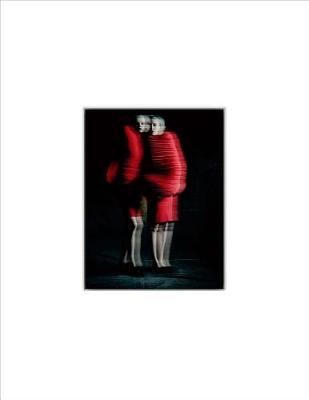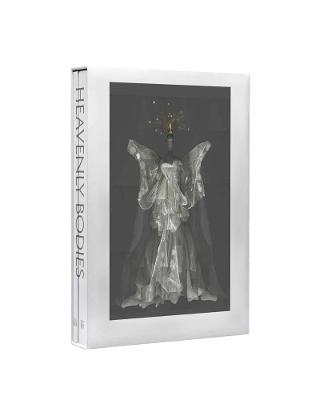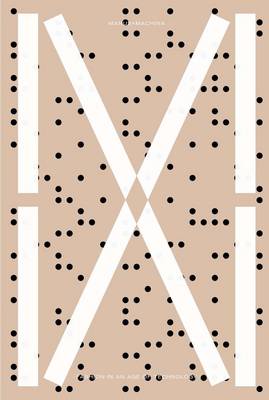Metropolitan Museum of Art (MAA) (YUP)
3 total works
A revelatory look at the influential and enigmatic designer behind Comme des Garçons
The great pantheon of fashion designers produces only a handful of creators who are masters of their métier. Rei Kawakubo of Comme des Garçons is one of them. Widely recognized among her contemporaries as the most important and influential designer of the past forty years, she has, since her Paris debut in 1981, defined and transformed the aesthetics of our time. This lavishly illustrated publication examines Kawakubo’s fascination with interstitiality, or the space between boundaries. Existing within and between dualities—whether self/other, object/subject, art/fashion—Kawakubo’s work challenges the rigid divisions that have come to define received notions of identity and fashionability, inviting us to rethink fashion as a site of constant creation, re-creation, and, ultimately, hybridity. Featuring brilliant new photography, and thought-provoking texts by Andrew Bolton, this book expresses the conceptual and challenging aesthetic of this visionary designer. An insightful interview and illustrated chronology of Kawakubo’s career provide additional context.
Published by The Metropolitan Museum of Art/Distributed by Yale University Press
The great pantheon of fashion designers produces only a handful of creators who are masters of their métier. Rei Kawakubo of Comme des Garçons is one of them. Widely recognized among her contemporaries as the most important and influential designer of the past forty years, she has, since her Paris debut in 1981, defined and transformed the aesthetics of our time. This lavishly illustrated publication examines Kawakubo’s fascination with interstitiality, or the space between boundaries. Existing within and between dualities—whether self/other, object/subject, art/fashion—Kawakubo’s work challenges the rigid divisions that have come to define received notions of identity and fashionability, inviting us to rethink fashion as a site of constant creation, re-creation, and, ultimately, hybridity. Featuring brilliant new photography, and thought-provoking texts by Andrew Bolton, this book expresses the conceptual and challenging aesthetic of this visionary designer. An insightful interview and illustrated chronology of Kawakubo’s career provide additional context.
Published by The Metropolitan Museum of Art/Distributed by Yale University Press
Exhibition Schedule:
The Metropolitan Museum of Art, New York
(05/04/17–09/04/17)
A brilliant exploration of fashion’s complex engagement with the great art and artifacts of Catholic faith and practice
Since antiquity, religious beliefs and practices have inspired many of the masterworks of art. These works of art have, in turn, fueled the imagination of fashion designers in the 20th and 21st centuries, yielding some of the most innovative creations in costume history. Connecting significant religious art and artifacts to their sartorial expressions, Heavenly Bodies: Fashion and the Catholic Imagination provides a critical analysis of fashion’s engagement with notions of the divine. Exploring fashion’s complex and often controversial relationship with Catholicism, Heavenly Bodies probes what dress reveals about the state of religion and spirituality within contemporary culture, and how it may manifest—or subvert—Catholic values and ideology. Art objects, such as devotional paintings and altarpieces from The Met’s collection, are presented alongside fashions from designers including Cristóbal Balenciaga, Callot Soeurs, Domenico Dolce and Stefano Gabbana, John Galliano, Jean-Paul Gaultier, Madame Grès, Christian Lacroix, Karl Lagerfeld, Jeanne Lanvin, Claire McCardell, Alexander McQueen, Thierry Mugler, Elsa Schiaparelli, and Gianni Versace. The volume also presents a selection of ecclesiastical vestments and accessories from the Vatican collection, many of which have not been published before.
Published by The Metropolitan Museum of Art/Distributed by Yale University Press
Since antiquity, religious beliefs and practices have inspired many of the masterworks of art. These works of art have, in turn, fueled the imagination of fashion designers in the 20th and 21st centuries, yielding some of the most innovative creations in costume history. Connecting significant religious art and artifacts to their sartorial expressions, Heavenly Bodies: Fashion and the Catholic Imagination provides a critical analysis of fashion’s engagement with notions of the divine. Exploring fashion’s complex and often controversial relationship with Catholicism, Heavenly Bodies probes what dress reveals about the state of religion and spirituality within contemporary culture, and how it may manifest—or subvert—Catholic values and ideology. Art objects, such as devotional paintings and altarpieces from The Met’s collection, are presented alongside fashions from designers including Cristóbal Balenciaga, Callot Soeurs, Domenico Dolce and Stefano Gabbana, John Galliano, Jean-Paul Gaultier, Madame Grès, Christian Lacroix, Karl Lagerfeld, Jeanne Lanvin, Claire McCardell, Alexander McQueen, Thierry Mugler, Elsa Schiaparelli, and Gianni Versace. The volume also presents a selection of ecclesiastical vestments and accessories from the Vatican collection, many of which have not been published before.
Published by The Metropolitan Museum of Art/Distributed by Yale University Press
Exhibition Schedule:
The Metropolitan Museum of Art
(05/10/18–10/07/18)
A stunning look at the paradoxical relationship between the artisanal and the technological in fashion
The complex and often ambiguous relationship between the hand crafted and the machine made is examined in this intriguing look at the ever-changing world of fashion and taste. Manus x Machina traces styles of dress from one-of-a-kind works and haute couture created by highly skilled artisans, through the introduction of industrial manufacturing, to extraordinary recent technological advancements applied to high fashion, such as 3D printing, laser cutting, and computer-generated weaving and patterns. The oppositional relationship between the machine, as representative of democracy and mass production, and the hand, as the hallmark of elitism, is explored in its many facets in this fascinating book.
Paradoxically, technology in fashion has both advanced artistic creation and obscured the sense of the designer’s expert hand. Similarly, handmade garments have come to represent either a nostalgia for lost craftsmanship or, in haute couture, a cult of personality and affluence. Interviews with renowned and cutting-edge designers such as Sarah Burton, Karl Lagerfeld, and Miuccia Prada discuss how technology can blur the line between haute couture and prêt-à-porter, and ultimately question the relevance of the distinction between hand and machine.
A tour de force in art book production, Manus x Machina incorporates two volumes into its innovative package. The main volume of the book includes a smaller hand-sewn booklet, which features the printed interviews, tucked into the back jacket flap. The outer cover of the main volume is made of three-ply plastic layers with high-frequency weld and die-cut flaps. The paperback cover is die cut (modelled on the punch cards used in the first automated weaving looms), and the main volume includes 5 different paper stocks and silver foil stamping, and is printed with both high-density and ultraviolet inks. The book also features new photography of extraordinary pieces, including intricate 19th-century floral designs by William Morris, handcrafted haute couture of designers such as Christian Dior and Alexander McQueen, and the specatuclar 3D creations of Iris van Herpen.
Published by The Metropolitan Museum of Art/Distributed by Yale University Press
The complex and often ambiguous relationship between the hand crafted and the machine made is examined in this intriguing look at the ever-changing world of fashion and taste. Manus x Machina traces styles of dress from one-of-a-kind works and haute couture created by highly skilled artisans, through the introduction of industrial manufacturing, to extraordinary recent technological advancements applied to high fashion, such as 3D printing, laser cutting, and computer-generated weaving and patterns. The oppositional relationship between the machine, as representative of democracy and mass production, and the hand, as the hallmark of elitism, is explored in its many facets in this fascinating book.
Paradoxically, technology in fashion has both advanced artistic creation and obscured the sense of the designer’s expert hand. Similarly, handmade garments have come to represent either a nostalgia for lost craftsmanship or, in haute couture, a cult of personality and affluence. Interviews with renowned and cutting-edge designers such as Sarah Burton, Karl Lagerfeld, and Miuccia Prada discuss how technology can blur the line between haute couture and prêt-à-porter, and ultimately question the relevance of the distinction between hand and machine.
A tour de force in art book production, Manus x Machina incorporates two volumes into its innovative package. The main volume of the book includes a smaller hand-sewn booklet, which features the printed interviews, tucked into the back jacket flap. The outer cover of the main volume is made of three-ply plastic layers with high-frequency weld and die-cut flaps. The paperback cover is die cut (modelled on the punch cards used in the first automated weaving looms), and the main volume includes 5 different paper stocks and silver foil stamping, and is printed with both high-density and ultraviolet inks. The book also features new photography of extraordinary pieces, including intricate 19th-century floral designs by William Morris, handcrafted haute couture of designers such as Christian Dior and Alexander McQueen, and the specatuclar 3D creations of Iris van Herpen.
Published by The Metropolitan Museum of Art/Distributed by Yale University Press
Exhibition Schedule:
The Metropolitan Museum of Art
(05/05/16-08/14/16)


